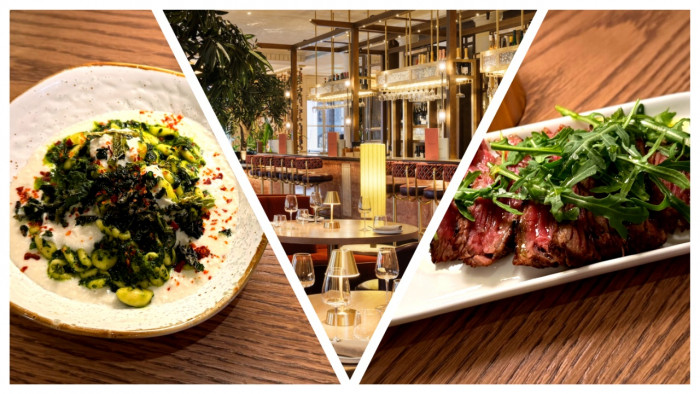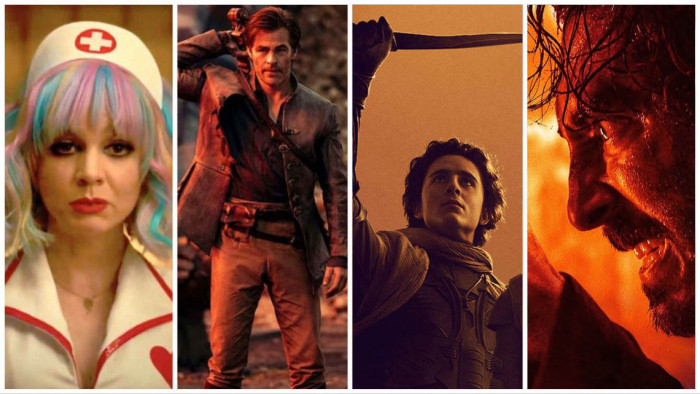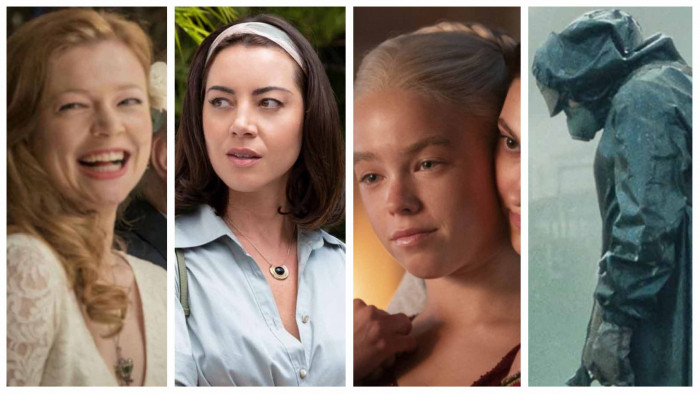As Anton Corbijn’s new film about photographer Dennis Stock’s relationship with James Dean lands, Martha Hayes looks at the importance of the male muse
It was a balmy Los Angeles night in 1954 when Dennis Stock found ‘the one’. He was 26 and taking photographs at a heady industry party (hosted by celebrated film director Nicholas Ray, who would go on to make Rebel Without A Cause). Jaded by a failed marriage and responsibility of being a parent, the chance encounter took him by surprise. Flirtatious smiles paved the way for pleasantries, and later, the exchange of numbers. So far, so Hollywood love story. Only not quite. The object of his pursuit was aspiring actor James Dean. Dennis Stock had found his muse.
Before artist-muse pairings such as Robert Mapplethorpe and Patti Smith in the Seventies and David Bailey and Jean Shrimpton in the Sixties, there was Stock and Dean. And the extraordinary story of this rare male duo is brought to light in Anton Corbijn’s film Life starring Robert Pattinson (Stock) and Dane DeHaan (Dean). Unlike Control (his 2007 profile of Joy Division’s Ian Curtis), this film, explains Corbijn, is “not a biopic” of a legend, but more a meeting of two artists – one a successful photographer and the other a rebellious young actor – who “touched each other’s lives”.

Creating an icon
After meeting Dean, 24, at the party and catching a preview of his first film East Of Eden, Stock – a Magnum photographer – became convinced he was destined for mega stardom and pitched the story to Life magazine. Stock shot Dean over a two-week period from his home in Indiana (where he was raised on a farm by his aunt and uncle) to New York (where he started his career). The pictures – most significantly one of him standing in the rain in Times Square, smoking – appeared in Life in March 1955 shortly before the release of East Of Eden, which did indeed catapult him into the big time. But they would be the only pictures Stock would take of Dean, who died in a car crash less than six months later (just weeks before the release of Rebel Without A Cause).
Stock – who also photographed the likes of Audrey Hepburn and Marilyn Monroe and lived until 2010 – always said that through his photos he had got to know, “or at least to glimpse the real James Dean”. Is that even possible in such a short space of time? Is that indicative of the photographer-muse connection? It’s a bit of both, says Corbijn, emphasising the significance of the journey they went on together.
“It was the only time that someone captured where James Dean came from and it was the last time he ever went to the place where he grew up,” he explains. “There’s a fair comment in the film from Magnum photography editor John Morris when he says [about Dean], ‘A guy looking drunk – that’s the leader of your new movement?’ The generation that grew up during the war didn’t have a voice until a decade later, when jazz and blues started and people were looking for somebody to identify with. James Dean broke the mould of how actors were supposed to behave. That’s why Stock’s Times Square photo became so iconic; this lonely guy who is good looking and rebellious really spoke to teenagers.”
Stock could never have predicted the success and legacy of his shots when he took them, so why was he so determined to shoot the then unknown Dean? Was their relationship purely platonic? The film doesn’t speculate. “They’re two normal guys who both want to get something out of life,” shrugs Corbijn. “I think what Stock got from Dean was to learn to enjoy the moment more; Dean got from Stock that he should appreciate the situation. Early on, when Stock tries to persuade Dean to pose for him, Dean replies, ‘I know, I want to help you,’ and Stock says, ‘No, no, I’m helping you.’”

Friends with benefits
Photographers can’t really ‘choose’ their muses. Without a sexual connection, the relationship can be more organic – as in the case of Bob Gruen, a respected rock photographer who spent nine years photographing John Lennon in New York until his death in 1980.
A chance meeting with Lennon and Yoko Ono at a benefit concert (and an innocent comment from Lennon: “People are always taking our picture but we never get to see them, what happens to these pictures?”) led to Gruen posting photos through Lennon’s door as he lived round the corner. “Years later I discovered they remembered that because I was one of very few people who didn’t want something from them,” explains Gruen, whose 2005 book John Lennon: The New York Years is being re-released in October to mark the 75th anniversary of Lennon’s birth. “It was gradual. They didn’t meet me and think, ‘you’re it’.”
Having cut his teeth on rock photography (most famously with U2, Depeche Mode and Joy Division) Corbijn relates to Gruen and Stock. He started hanging out with Dutch musician Herman Brood in the Seventies and is cautious about the balance between a photographer and his muse. “Being a muse is one thing, but when that muse goes stratospheric, the photographer won’t be on the same trip. You have to accept that and I didn’t. I felt he was mine.”
“I was aware that he was John Lennon and I wasn’t,” recalls Gruen, who also photographed Led Zeppelin, Tina Turner and the Sex Pistols. “But I was a personal photographer and if they wanted a photo they would call me.” Yes, even at 4am. “I remember leaving them in the studio one night to go home and the road manager called and said, ‘I think you should come back to the studio, Mick Jagger’s coming over.’ I would drive people from one club to another. There’d be a joint or a bottle of cognac in the car so people liked getting a ride from me.”

Early exit
After nine years with his muse, both Gruen and his career were turned upside down by Lennon’s murder in December 1980. “We were planning on going around the world on tour,” he recalls. “It was like being cut really deeply. Eventually the wound heals and grows a scar, but every time you touch it you feel that pain. It affected how I felt about life. Taking photos or even just waking up; nothing made sense any more. There are times I wish I’d taken more pictures. One night Paul and Linda McCartney made a surprise visit. It was a secret reunion and I was dying for them to ask me to take a picture, but they didn’t, so I didn’t intrude.”
Stock and Dean’s relationship might not have been so profound, but the effect the abrupt end of their union had on his career was as significant, explains Corbijn. “The photographs probably overshadow everything else he’s done in his life. He had a big career, but to be referred to as the photographer of something you did in your early twenties is a hindrance.”
Corbijn should know, having struggled to manoeuvre his own career away from rock photography. His equivalent to ‘James Dean in Times Square’ is a Seventies shot of Joy Division with their backs to the camera. “Nobody wanted to publish that picture, but six months later, Ian died, and it was on the cover of the NME.”
It’s impossible to imagine the Dean story without the images Stock captured in the months leading up to his death in September 1955. It may have been through a cruel twist of fate that Dean achieved his status as a cultural legend, but without these photographs we wouldn’t have any understanding of that. And it’s not just the iconic images we have to thank Stock for, it’s the lengths he took to get them; it’s for taking a huge career risk and for pursuing Dean with all the intensity and intimacy the traditional photographer-muse relationship is fraught with. Perhaps Stock himself best sums it up. “I liked him sometimes, but not all the time,” he once said. “But he was like family after a while. We really bonded in Indiana. Not in New York, where he was distracted a lot. He was an insomniac and didn’t get a lot of sleep and was a pain in the ass to work with.”
Life is at cinemas nationwide from 25 September
(Images: Rex, Getty, Eone)










